November 11, 2024
Garden for Birds and Pollinators
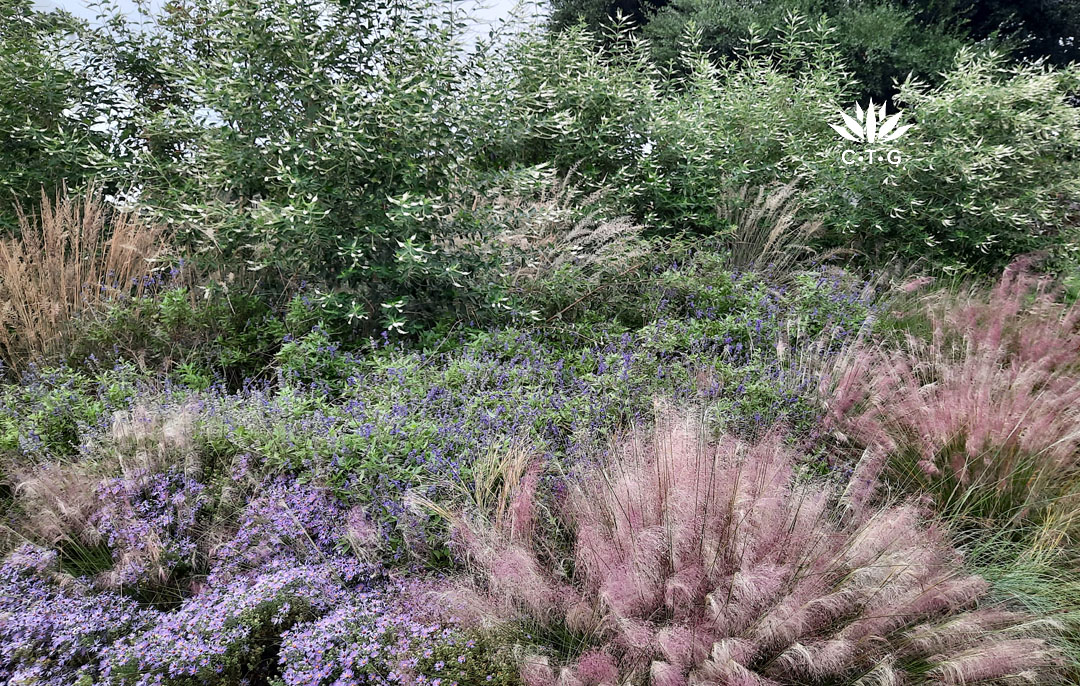
Bird populations have declined dramatically in recent years. Since Texas is on the migration pathway, consider how to layer from treetops to ground covers to support them and all wildlife throughout the year. “One of the big things that we’re short on in backyards is structure between perennials and tall trees,” wildlife biologist Rufus Stephens tells us this week. “So, how do you add more shrubs and more evergreen shrubs in your yard? Creating layers of habitat structure in your backyard habitat is really important.”
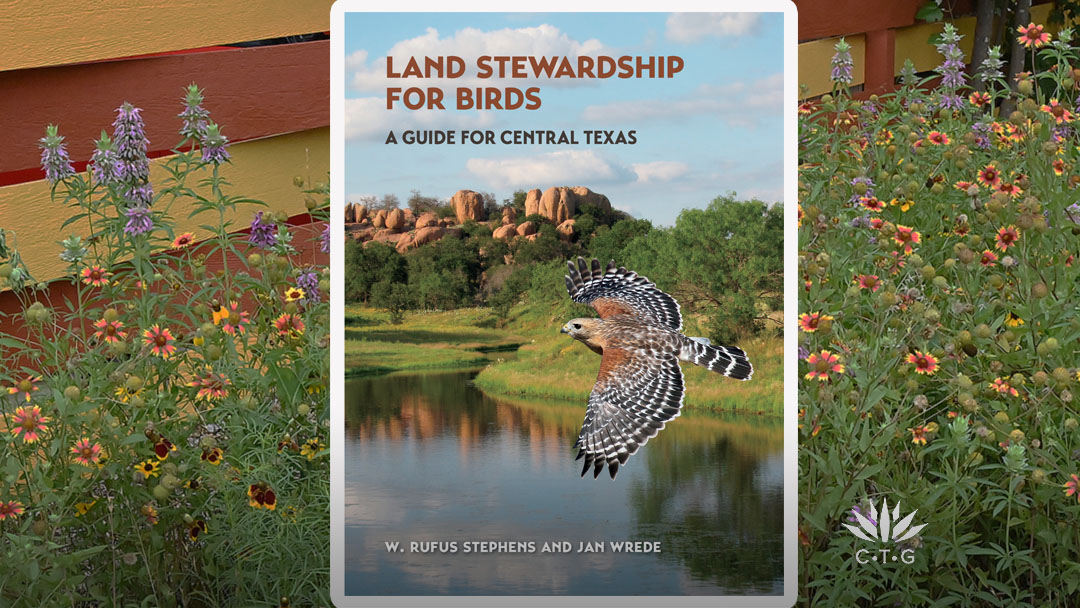
Co-author of Land Stewardship for Birds with Jan Wrede, this week he joins John Hart to explore how we can lend a helping hand, even in our backyards. Beautifully organized and photographed, they tour us through Central Texas’s diverse egoregion habitats and management strategies in each. Bird summaries include identification, habitat needs from food to shelter, and tips to protect and steward. One detail is rather mind-boggling—the breeding territory for each species. For example, the Northern mockingbird needs abut 1.5-6 acres per breeding pair!
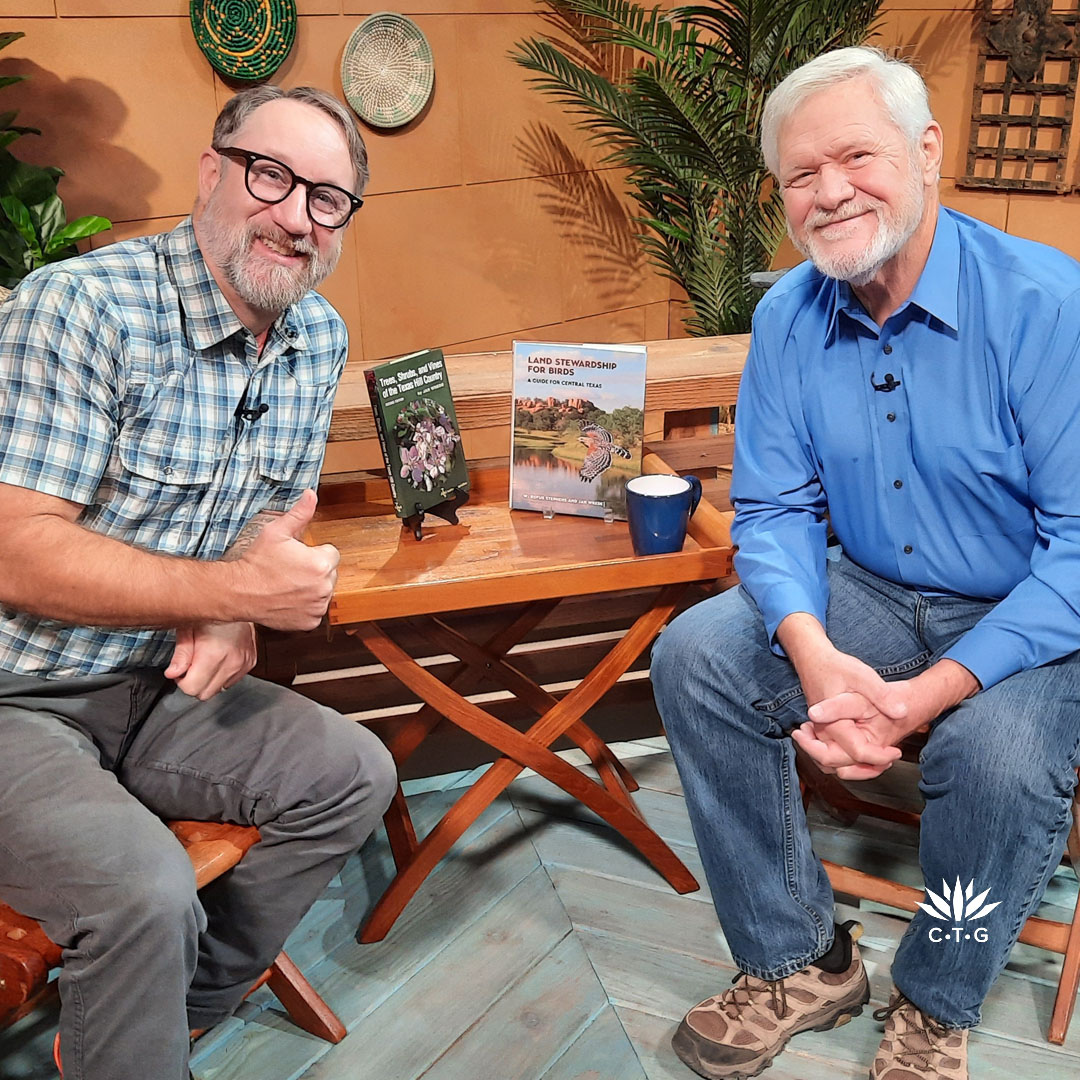
Since birds are so diverse, we also want to provide diverse food sources from fruits, berries, seeds, and insects. When we make a good pollinator habitat, we’re also making good bird habitat as well because so many of our birds are insect eaters,” Rufus notes.
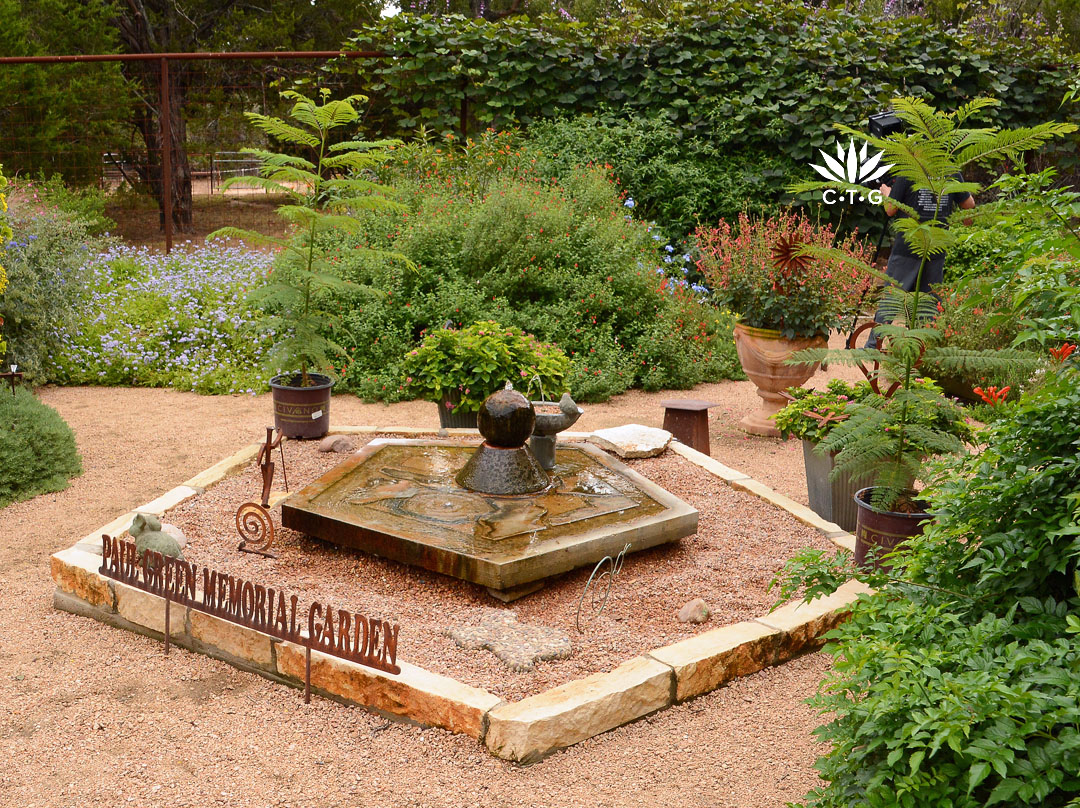
Providing water is just as important (remember our recent summers when wildlife was desperate for a drink?). Go for shallow containers and provide rocks, twigs, or other perches to prevent small birds, insects, and amphibians from drowning, like Doug Green crafted in his bird and pollinator deer-protected sanctuary.
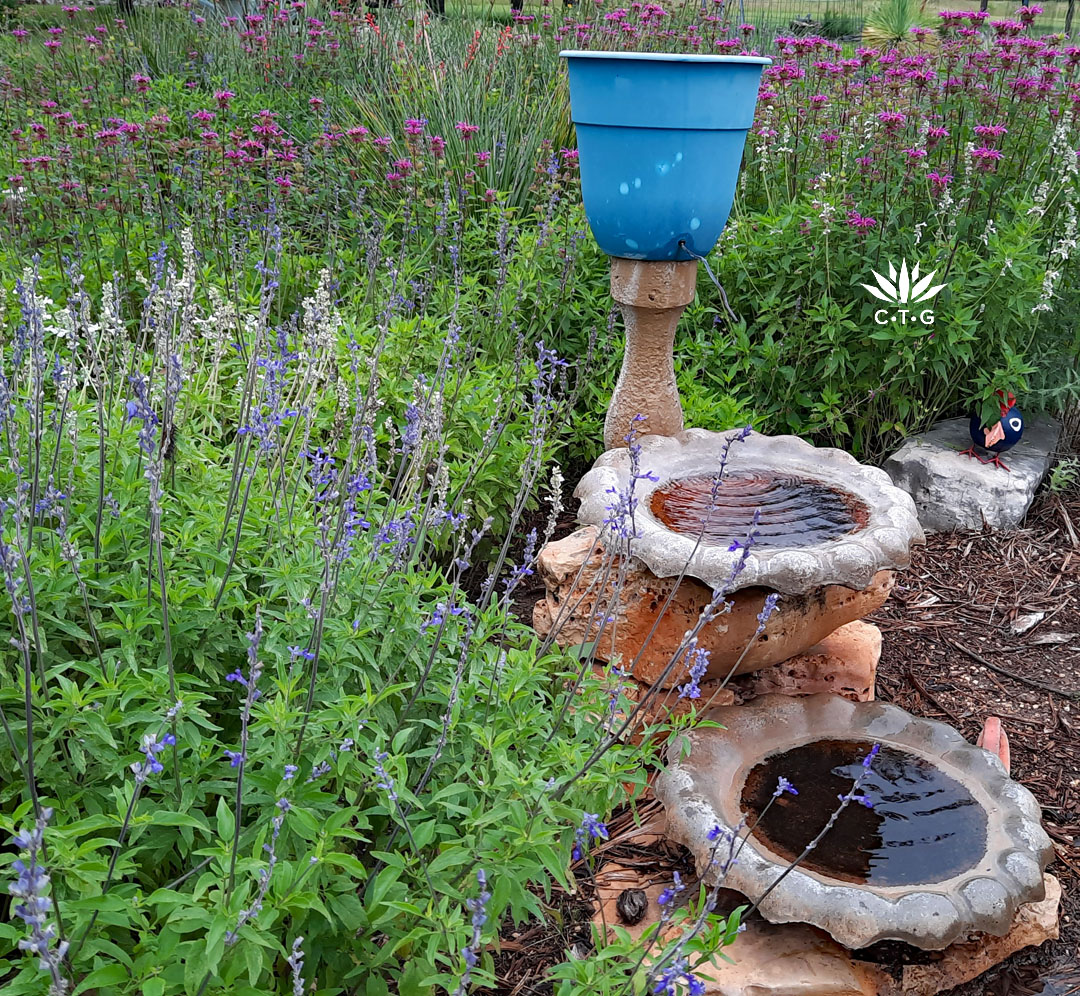
And it won’t impact water conservation! “Actually, a couple flushes of the toilet is about how much water you would use in a typical bird bath per week. And the other thing that can really help are things like drippers, which make that sound of water like flowing water without it being flowing, or without it utilizing more water,” Rufus notes.
Jan and Rufus include powerful tools and techniques to help us understand our soil, habitat, and plants that grow naturally in our area. Two of note: Texas Parks and Wildlife Map My Property (habitats, endangered species, and more); and Web Soil Survey through the Natural Resources Conservation Service.
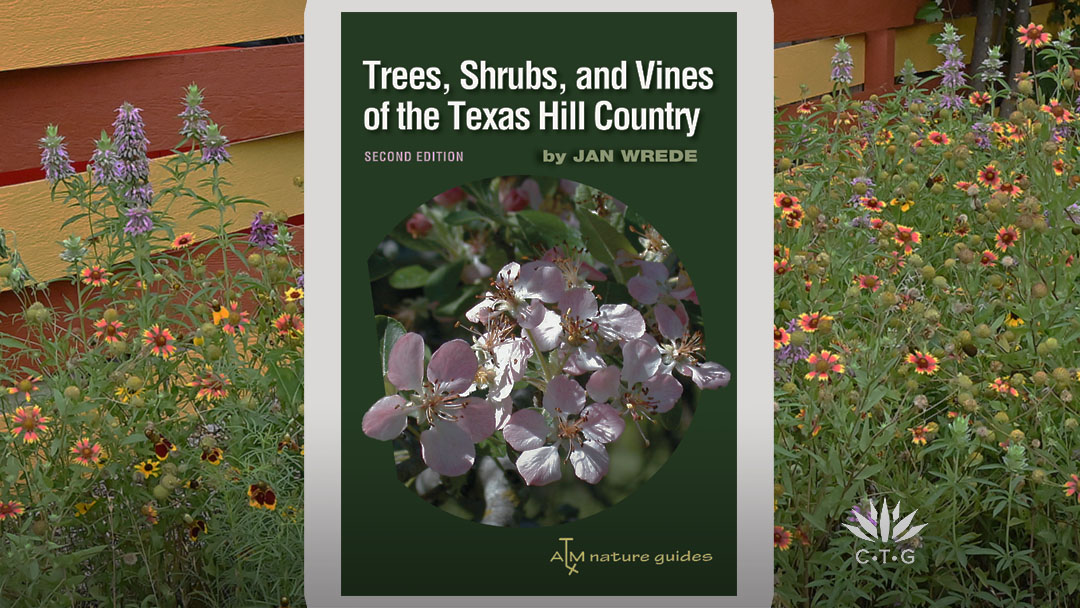
Learn more about how select, layer, and grow Texas tough plants in Trees, Shrubs, and Vines of the Hill Country, another essential guide authored by Jan Wrede, former education director at the Cibolo Nature Center.
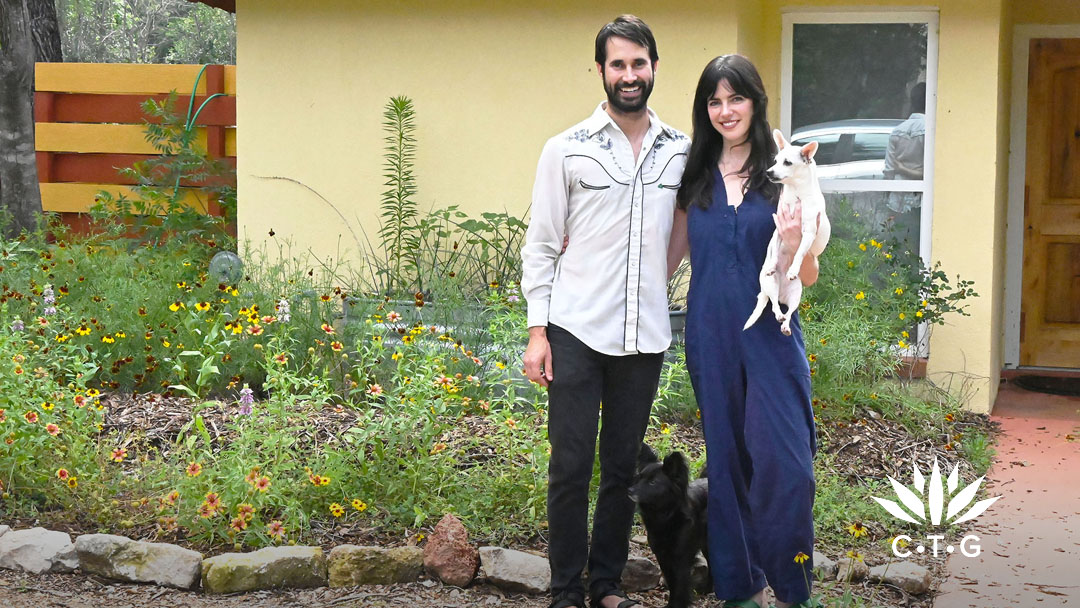
In summer 2023’s extreme heat, Chris Garza sheet mulched his small front yard to kill Bermuda grass and invasive weeds. An ISA Certified Arborist, ecologist, environmental scientist, and mycologist—Chris applied his experience to restore soil health and wildlife diversity when he and Bre Enright bought their first house.
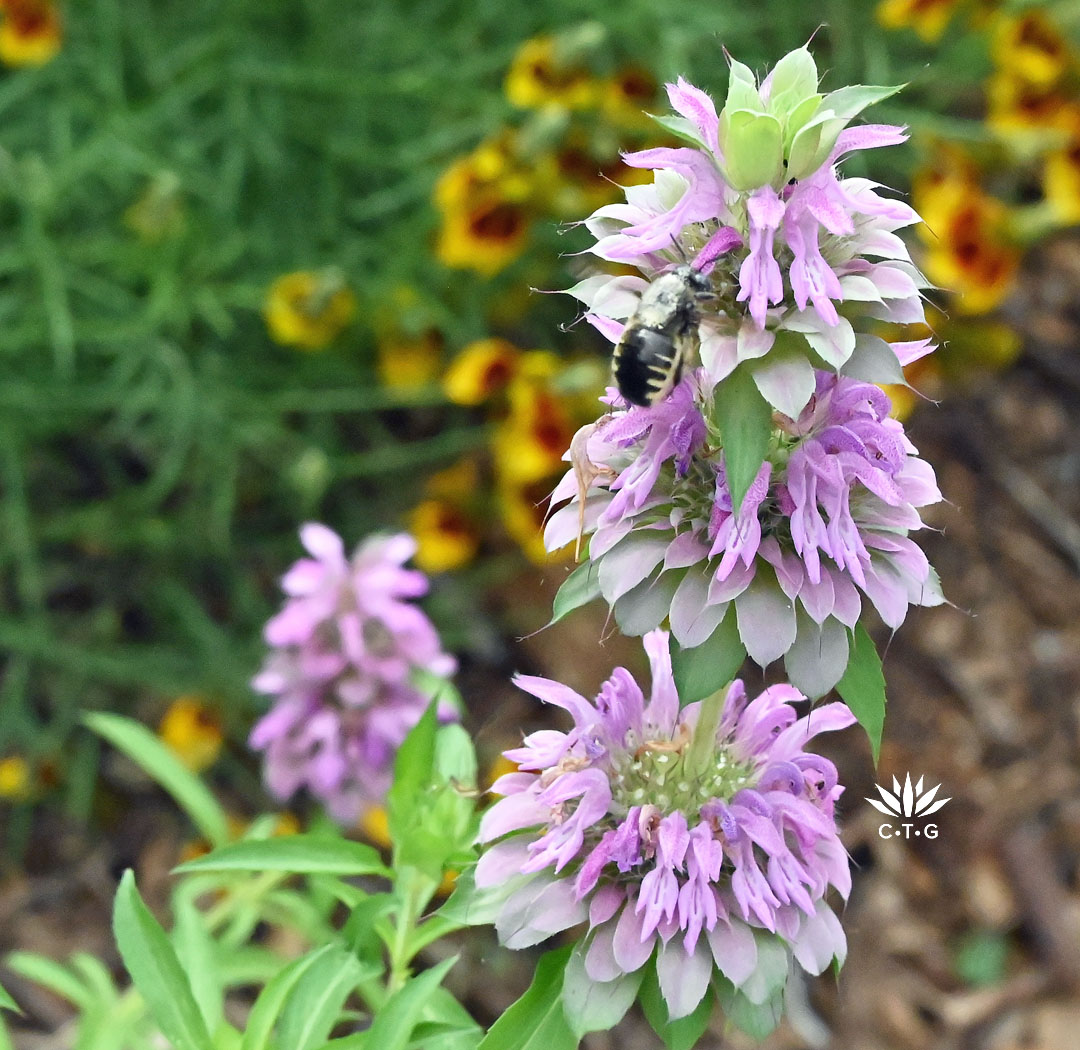
From day one, he’s logged his observations from animals to plants—invasive, native on site, and native added. Follow his remarkable observation journey on iNaturalist.
Read more and watch their segment now!
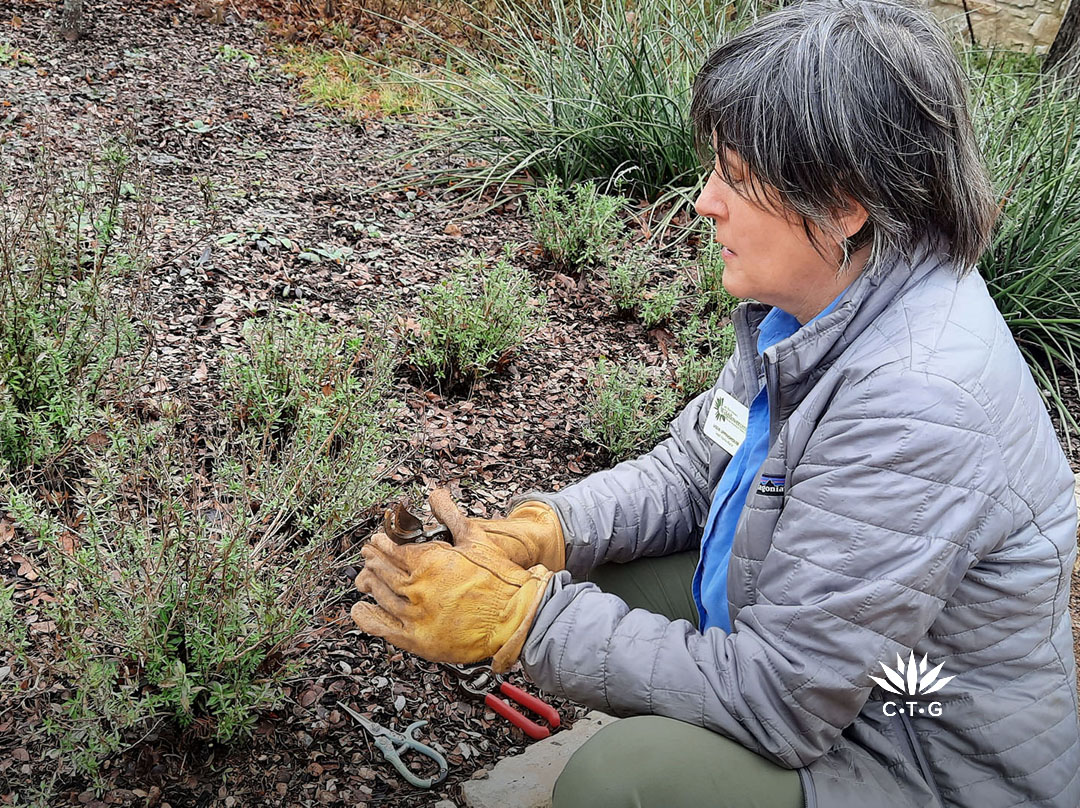
It’s much too early to shape and prune our woody perennials like autumn sage (Salvia greggii). In the spirit of planning ahead, Wildflower Center horticulturist Leslie Uppinghouse demonstrates correct pruning for late January or February—she recommends after a freeze.
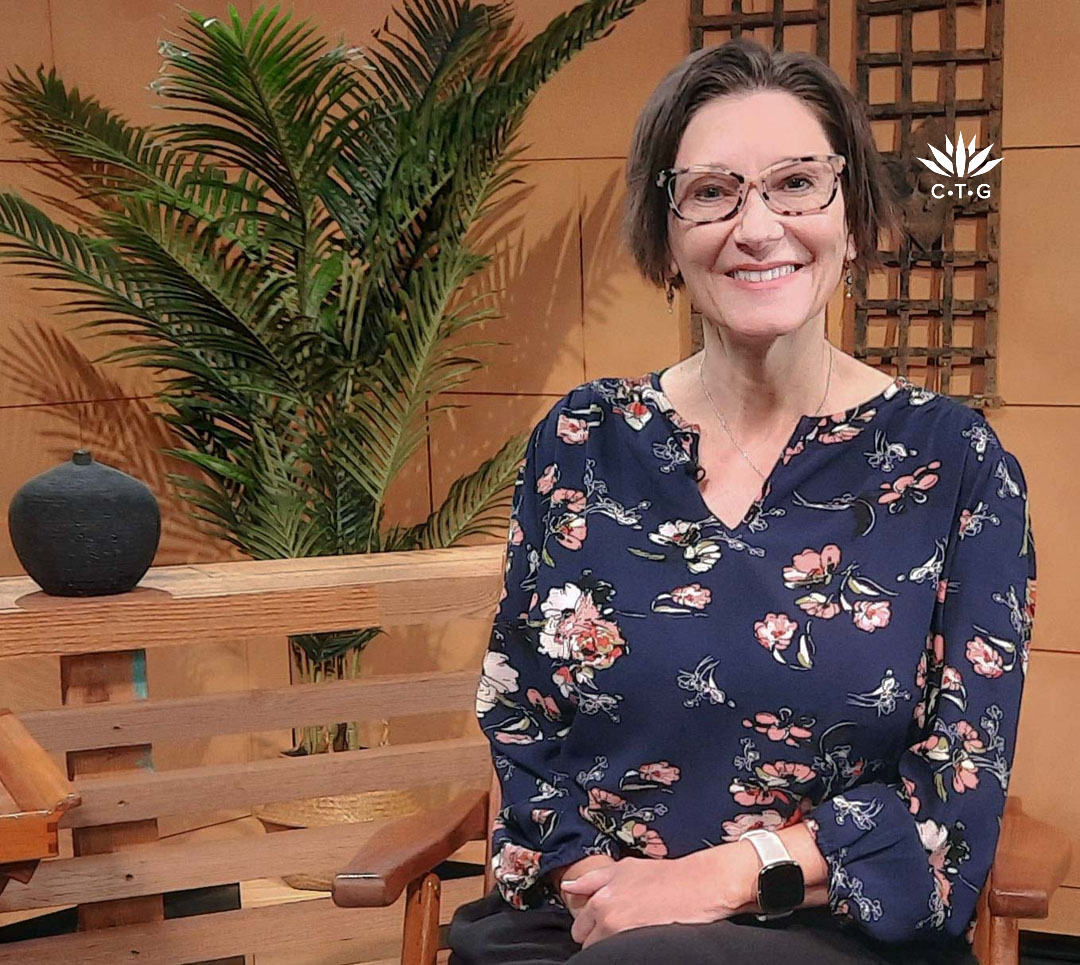
Daphne wraps up our fall programs with tributes from our viewers. We always love hearing from you and what’s going on in your gardens!
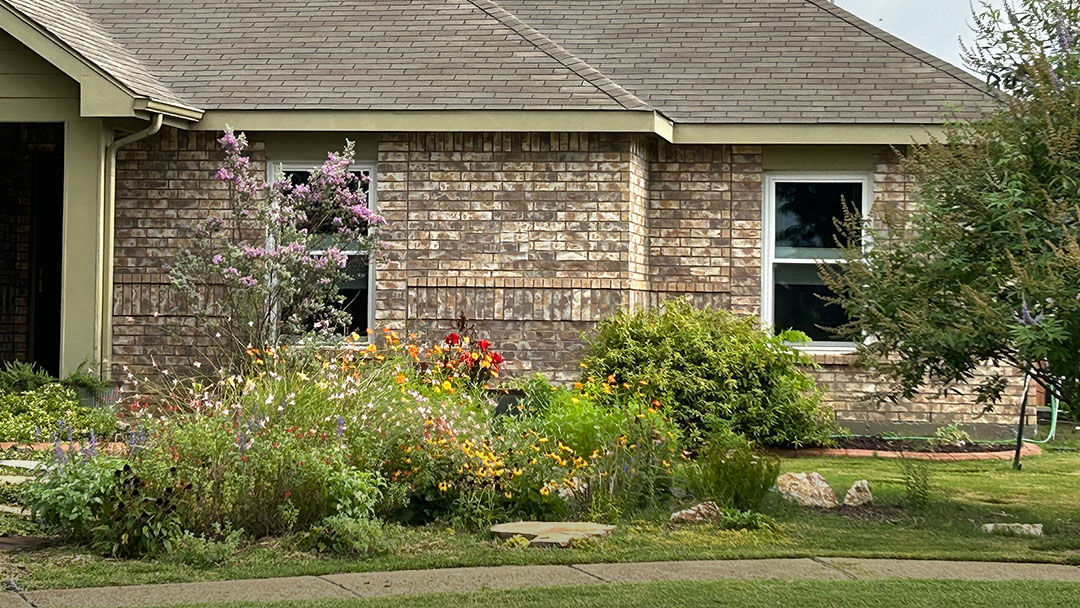
Here’s a beautiful makeover by Cathy Ford’s Dallas area garden. She wrote CTG, “We’ve been watching Central Texas Gardener on PBS for years. Inspired by what we’ve seen on the show, when we lost one of the trees, we decided to create a Texas version of the “English Garden” and planted waterwise, native and native-adjacent plants. As is true for all gardens, it’s a work in progress, but we love how it’s going. Truly CTG has been our inspiration, as well as giving us the confidence that we could do it.”
This wraps up our fall programs, but we’d love to hear from you as we prep Spring 2025! Of course, stream us any time, all the time, for free on PBS, the PBS app, and right here on our website (under Past Episodes and Resources/Gardeners).
And much gratitude from us all for our generous underwriters, Lisa and Desi Rhoden and Diane Land and Steve Adler!
Watch now!
tags:

